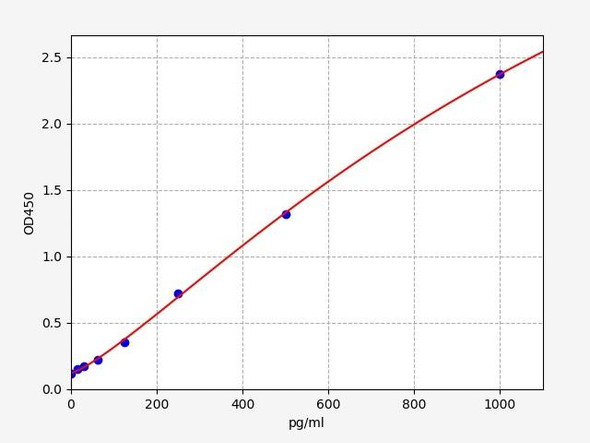Description
| Product Name: | Mouse Carbonic Anhydrase 9/CA9 Recombinant Protein (His tag) |
| Product Code: | RPES6109 |
| Size: | 20µg |
| Species: | Mouse |
| Expression Host: | HEK293 Cells |
| Synonyms: | RP23-195K8.9, CAIX, Ca9, MN/CA9 |
| Mol Mass: | 42.79 kDa |
| AP Mol Mass: | 50 kDa |
| Tag: | C-His |
| Purity: | > 95 % as determined by reducing SDS-PAGE. |
| Endotoxin Level: | Please contact us for more information. |
| Bio Activity: | Testing in progress |
| Sequence: | Met1-Asp390 |
| Accession: | Q8VHB5 |
| Storage: | Generally, lyophilized proteins are stable for up to 12 months when stored at -20 to -80°C. Reconstituted protein solution can be stored at 4-8°C for 2-7 days. Aliquots of reconstituted samples are stable at < -20°C for 3 months. |
| Shipping: | This product is provided as lyophilized powder which is shipped with ice packs. |
| Formulation: | Lyophilized from sterile PBS, pH 7.4. Normally 5 % - 8 % trehalose, mannitol and 0.01% Tween80 are added as protectants before lyophilization. Please refer to the specific buffer information in the printed manual. |
| Reconstitution: | Please refer to the printed manual for detailed information. |
| Background: | Carbonic anhydrases 9 (CA IX), also known as membrane antigen MN or CA9, is a member of the carbonic anhydrase (CA) family and may be involved in cell proliferation and cellular transformation. Cas are zinc metalloenzymes that catalyze the reversible hydration of carbon dioxide (H2O + CO2 = H+ + HCO3–) and thus participate in a variety of biological and physical processes. CA IX protein is expressed primarily in carcinoma cells lines, and the expression is cell density dependent and has been shown to be strongly induced by hypoxia, accordingly facilitates adaptation of tumor cells to hypoxic conditions. It is involved in tumorigenesis through many pathways, such as pH regulation and cell adhesion control. CA IX is used as a marker of tumor hypoxia and as a new therapeutic target for many human carcinomas and cancers. |






